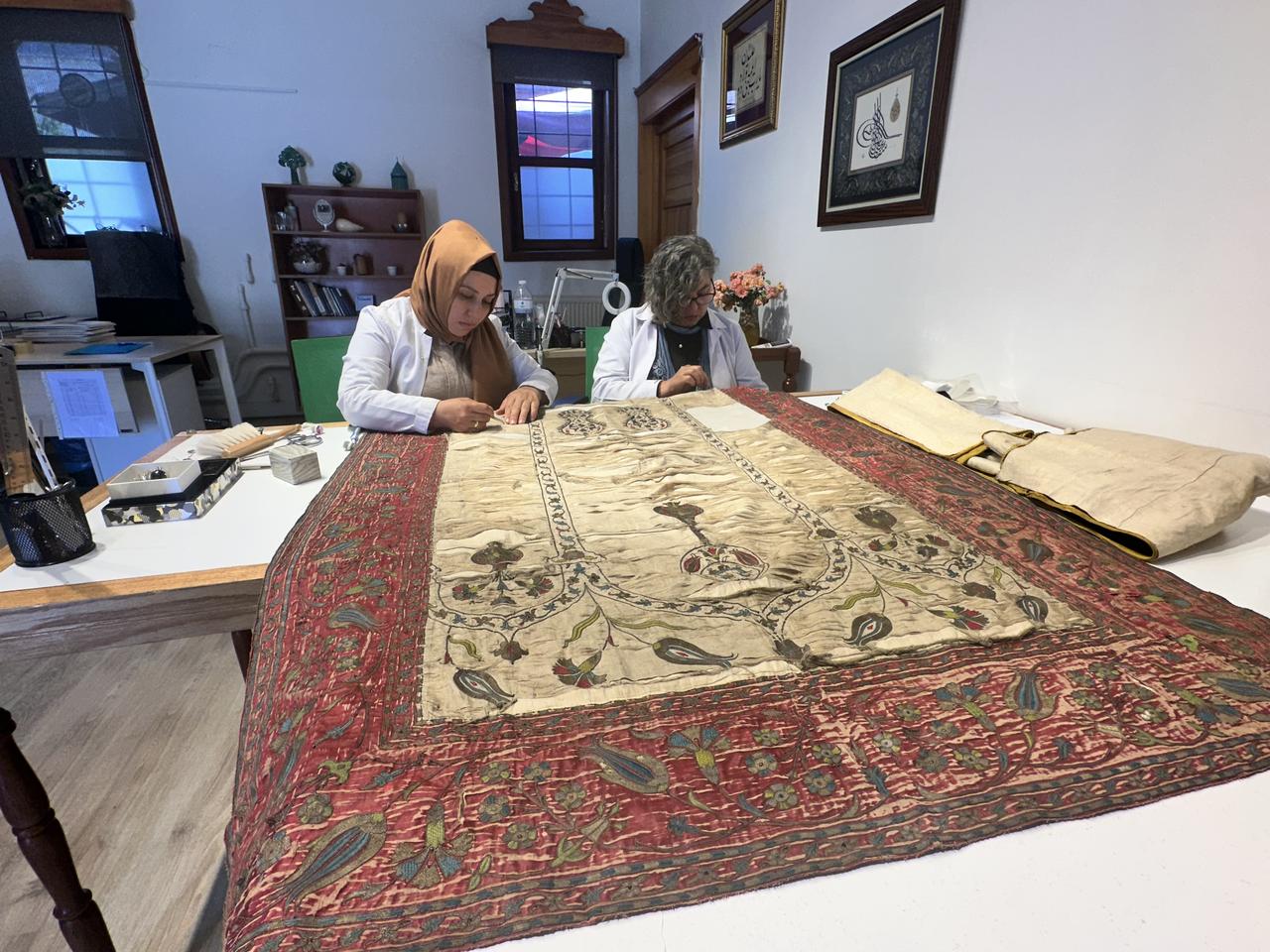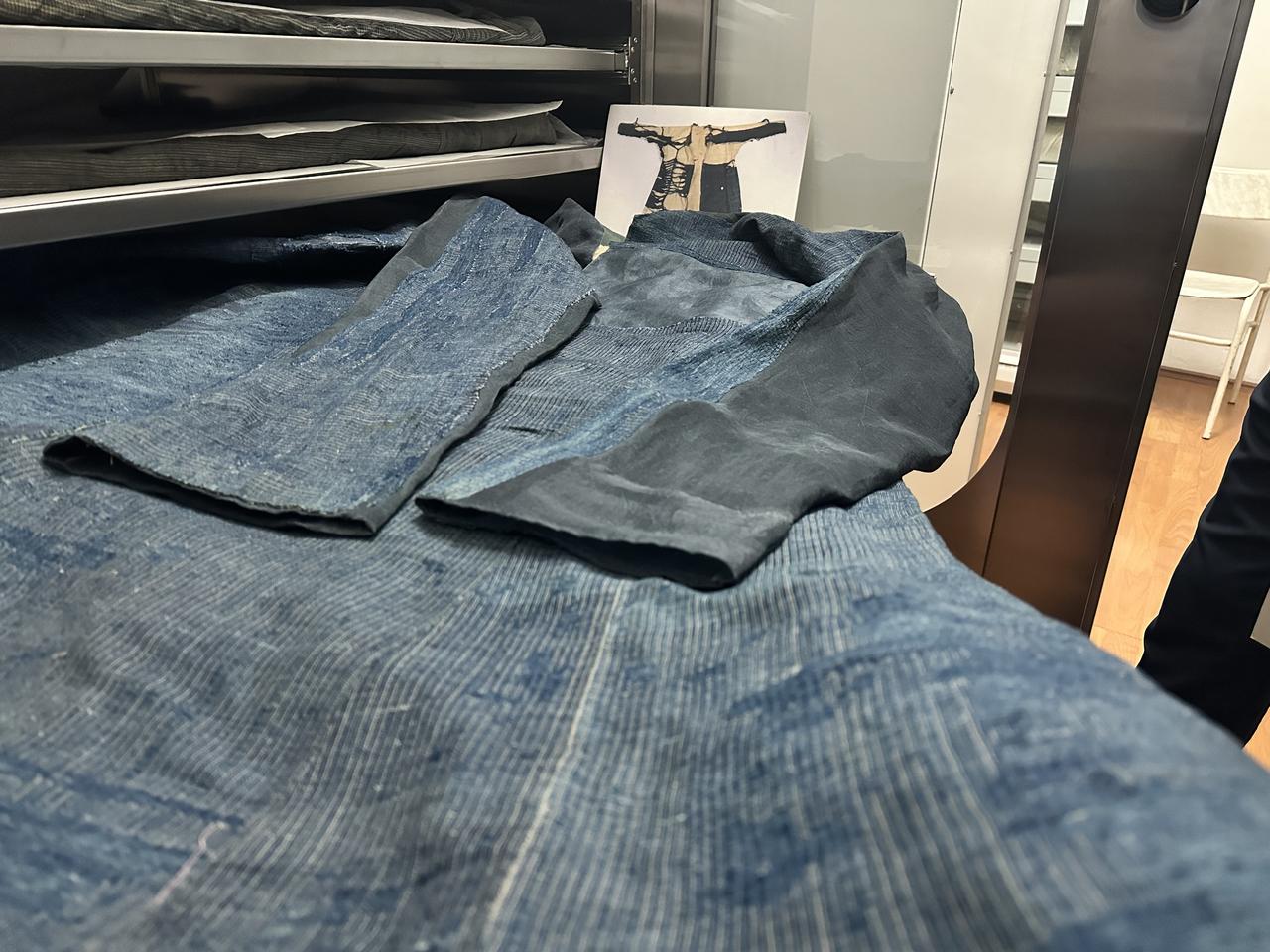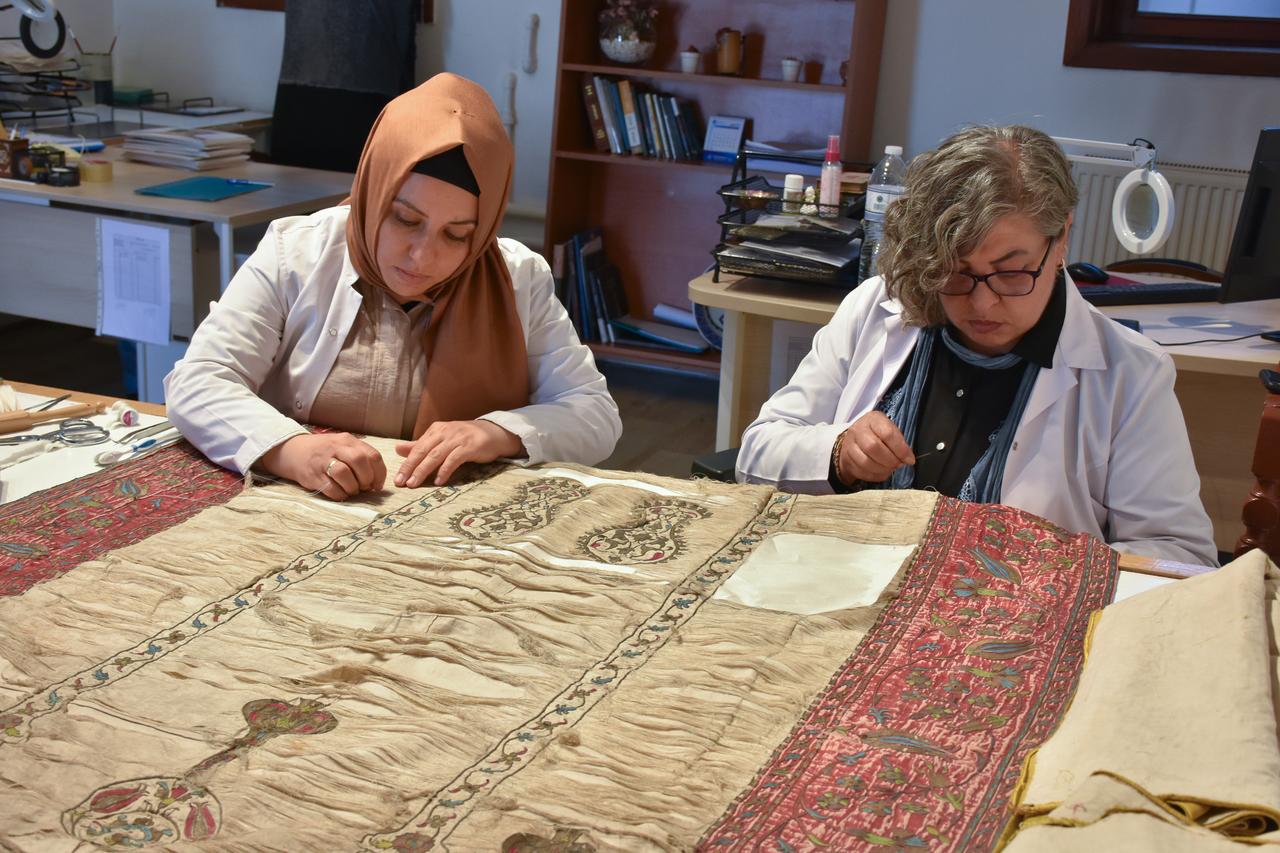
A collection of 19 rare textile artifacts believed to have belonged to the 13th-century Sufi mystic Mevlana Celaleddin-i Rumi is undergoing meticulous restoration at the Mevlana Museum in Konya, central Türkiye.
These historical garments are being treated to ensure their long-term preservation and future display in specially controlled museum environments.
The Mevlana Museum, home to Rumi’s tomb and considered the spiritual center of the Mevlevi Sufi order, is one of Türkiye’s most visited cultural sites. Its collections include handwritten manuscripts, calligraphic panels, oil lamps, and musical instruments associated with the Mevlevi tradition.
Among them are several textile items traditionally thought to have been worn or used by Rumi himself, including ritual garments such as a sikke (a tall felt hat worn by dervishes), an arakiye (a lightweight cap made of mohair), a robe, a shirt, and a prayer rug.
These pieces are now being restored, cleaned, and stored in humidity- and temperature-controlled steel display cabinets designed specifically to protect them from environmental damage.

According to museum director Naci Bakirci, the conservation initiative began in 2021. The museum collaborated with restoration laboratories under the Ministry of Culture and Tourism and received academic support from several universities, including Marmara University, where color and dye analysis of the fabrics was conducted.
Bakirci explained that restoration experts first documented the condition of each piece, including signs of wear and deterioration.
“Each of the 19 textiles had its own set of problems. Some linings were worn, while in the case of the prayer rug, the weft and warp threads had become matted into clumps,” he noted.
A team of three trained restorers specializing in textiles and paper conservation began working on the garments after completing thorough documentation and analysis. Restoration work was then carried out on a case-by-case basis depending on the condition of each fabric.
Seventeen out of the 19 garments have now been fully restored. Of these, 15 are designed in the form of robes. Some are thought to have been part of Rumi’s everyday attire, while others are believed to have served ceremonial purposes.
Bakirci emphasized that a museum's duty extends beyond exhibiting its collections to also preserving them for future generations. In this context, protective storage solutions have been designed to ensure the longevity of these rare garments.
Restorers used silk backing and special stitching techniques to support weakened parts of the fabric. “Our colleagues separated the fringes and threads of the textiles without using harmful chemicals. It’s fair to say the fabrics have come back to life, regaining the form of garments,” Bakirci said.
The newly restored items were put on display in 2024.
A prayer rug featuring botanical motifs such as carnations and tulips has now entered the final phase of restoration.

Aliye Unal, one of the conservators involved in the project, described the excitement that comes with working on such significant historical objects.
Before beginning any work, her team documented each piece photographically and assessed the damage. If wet cleaning was necessary, they tested colorfastness on small areas first.
“We work step by step. Every day we come here, we start with the same enthusiasm as if we’re beginning a new project. We love seeing the before and after—that’s our favorite part,” Unal said.